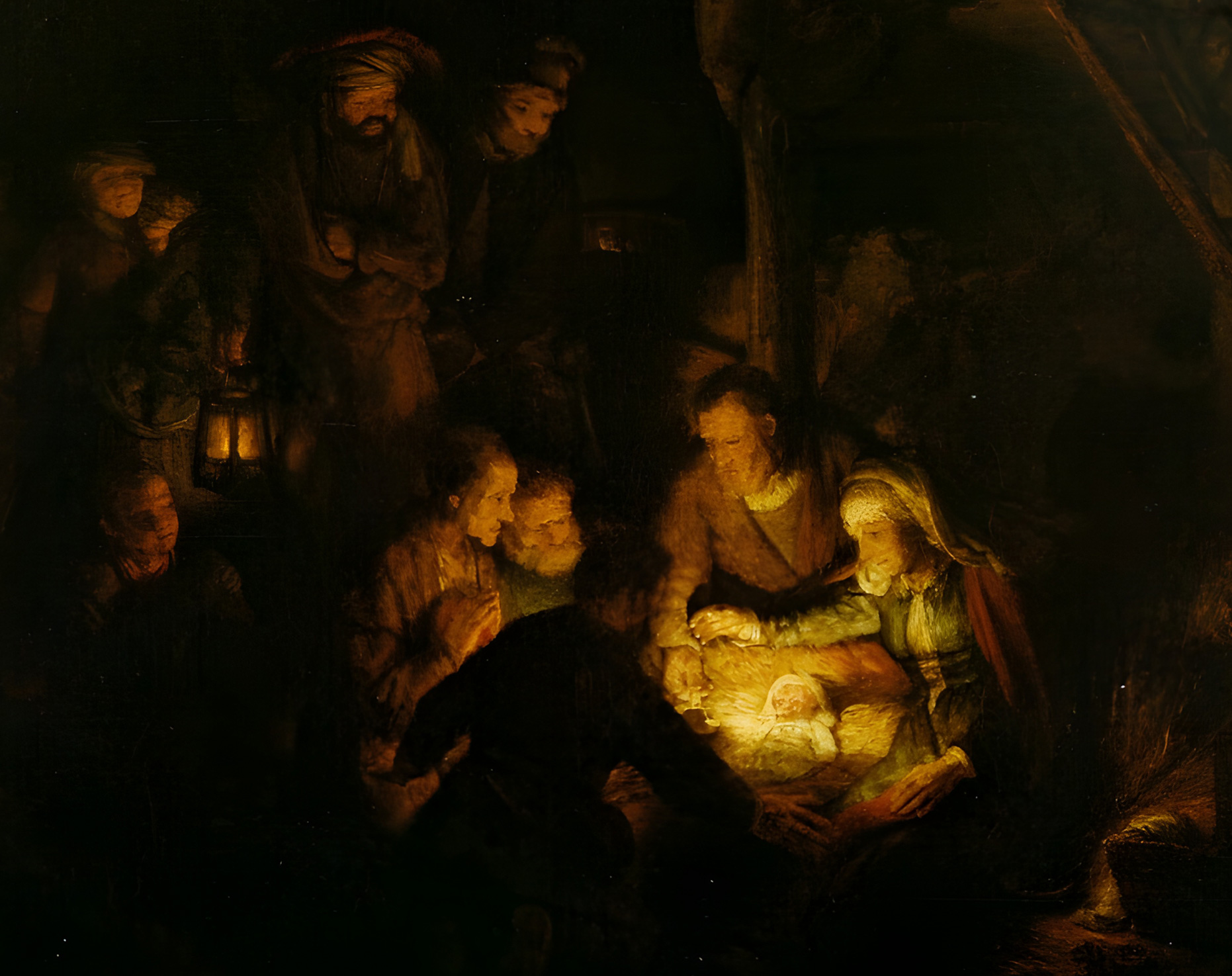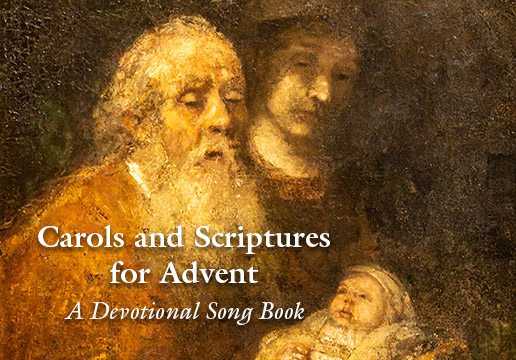
DECEMBER 23
View the Full Advent Calendar
What Child Is This?
Artwork:
Adoration of the Shepherds by Rembrandt, (1646) is a Baroque Style oil on canvas. Housed in the Bavarian State Painting Collections, Alte Pinakothek, Munich, Germany, Rembrandt depicts a warm illuminating glow which shines on the newborn Christ, who is watched over by Mary, Joseph and a gathering of worshippers and onlookers. The source of the light is hidden, so it seems to radiate directly from the sleeping child, illuminating the faces of all around him.
Carol Text: William Chatterton Dix, 1865;
Carol Melody: Greensleeves, 1870
Piano accompaniment by Lezlie Taguding
![]()
What Child is this who laid to rest
On Mary’s lap is sleeping
Whom angels greet with anthems sweet
While shepherds watch are keeping
This this is Christ the King
Whom shepherds guard and angels sing
Haste haste to bring Him laud
The Babe the Son of Mary
![]()
Why lies He in such mean estate
Where ox and ass are feeding
Good Christian fear for sinners here
The silent Word is pleading
Nails spear shall pierce Him thro’
The cross be borne for me for you
Hail hail the Word made flesh
The Babe the Son of Mary
![]()
So bring Him incense gold and myrrh
Come peasant king to own Him
The King of kings salvation brings
Let loving hearts enthrone Him
Raise raise the song on high
The virgin sings her lullaby
Joy joy for Christ is born
The Babe the Son of Mary
“You will conceive and give birth to a son, and you are to call him Jesus. He will be great and will be called the Son of the Most High. The Lord God will give him the throne of his father David, and he will reign over Jacob’s descendants forever; his kingdom will never end.”
- Luke 1:31-33
Advent Devotional
The title of this carol asks a question that each person will ultimately have to answer. It was the question on the mind of everyone who came to see the child who, “On Mary’s lap is sleeping.” The words to this carol were composed by Willian Dix around 1865. Dix was a successful insurance executive in Glasgow, Scotland, who suffered from illness and depression. Yet out of his depression he penned these verses and married them with the music from a song composed in the 1500’s titled, “Greensleeves.” “Greensleeves” was a balled about a gentleman longing for his love, Lady Greensleeves.
Dix provides us with the answer to his question – “This, this is Christ the King.” But what type of king is born in dark and dirty surroundings among animals? Instead of a royal guard, this carol tells us that Jesus’s guard was made up of shepherds. Jesus’s kingship is not like human kingships. His kingdom is not about strength, but weakness. It is not about power, or money, or reputation, it is about suffering. Each verse ends with the reminder that Jesus is a “Babe”, a helpless child. He who is the “bread of life” (John 6:35) once cried out in hunger. He who is the “living water” (John 4:10) once cried out from thirst. But we shouldn’t let the circumstances of Jesus’s birth fool us. A reminder of this comes from the conclusion of C.S. Lewis’s The Chronicles of Narnia when those loyal to Aslan are surrounded and forced into a small stable that they think contains the evil god, Tash. Instead, they find another world and Aslan’s loyalists discover that with this stable, “its inside is bigger than its outside.” This triggers Queen Lucy’s remark that, “In our world too, a Stable once had something inside it that was bigger than our whole world.”
Prayer
Almighty God during
this season as many
ask questions about the
identity of Jesus
and the meaning
of Christmas, reveal
Yourself to us.

Joseph A. Kohm
Vice President for Development, CSLI & CSLI City Director, Virginia BeachJoseph A. Kohm, C.S. Lewis Institute Vice President for Development and City Director for Virginia Beach. Joe is an attorney and formerly worked as a Certified Major League Baseball Player Agent. He earned his Master’s in Management Science from the State University of New York at Oswego and both his J.D. and M.Div. from Regent University. Joe is the author of The Unknown Garden of Another’s Heart: The Surprising Friendship between C.S. Lewis and Arthur Greeves (Wipf and Stock, 2022.)




